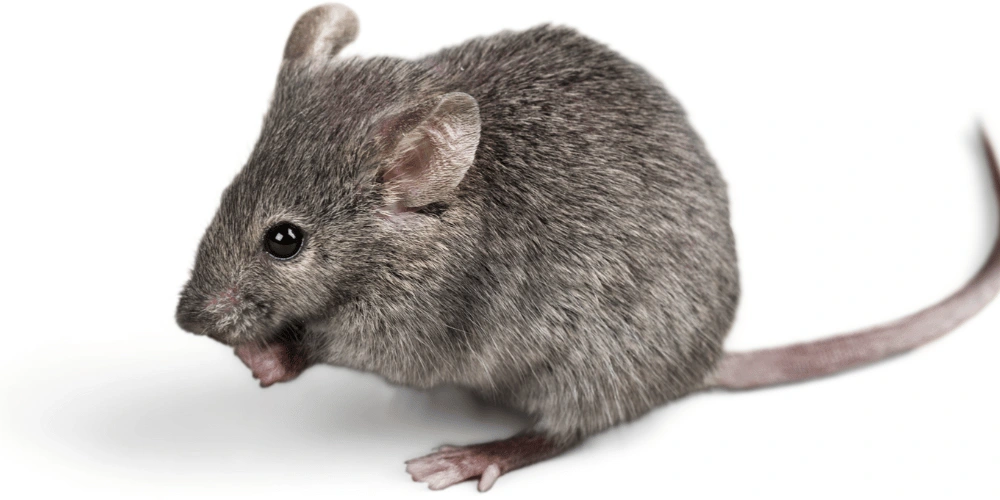Historic Neuroscience Discovery: Team Creates First Detailed Mammalian Brain Map

Anúncios
Groundbreaking Achievement in Brain Mapping
Using a speck of mouse brain matter no larger than a grain of sand, scientists have achieved a remarkable breakthrough by creating the first precise, three-dimensional map of a mammal’s brain.
This groundbreaking achievement details the structure, function, and activity of 84,000 neurons, 200,000 brain cells, and an astonishing 3.4 miles of neuronal wiring, which is nearly one and a half times the length of New York City’s Central Park.
Anúncios
Collaborative Effort
This ambitious project resulted from a decade of collaborative research involving 150 scientists across 22 institutions, including the Allen Institute for Brain Science, Baylor College of Medicine, and Princeton University.
The teamwork and dedication invested in this project are unparalleled, reflecting a monumental collaborative effort in the field of neuroscience.
Anúncios
Detail and Scale
The detailed map provides insights into the intricate network of the mouse brain.
By analyzing the complex neuronal wiring and synapses, the research has opened a new window into understanding brain connectivity.
Dr. Forrest Collman of the Allen Institute marvled at the beauty and detail of the neurons, comparing it to the awe one feels when viewing a distant galaxy.
Transition to Revolutionary Mapping Process
The project’s scale is phenomenal, representing only 1/500 of the full mouse brain yet generating 1.6 petabytes of data.
This achievement not only demonstrates the complexity of the neural landscape but also sets the stage for the next steps in brain mapping, such as the revolutionary techniques used in the recording and reconstruction process.
Revolutionary Mapping Process
Recording Brain Activity
To create the detailed three-dimensional map of a mouse’s brain, the first step involved recording live brain activity.
Researchers at Baylor College of Medicine focused on the visual cortex, the part of the brain responsible for processing what the mouse sees.
To ensure rich and varied activity, they encouraged the mouse to run on a treadmill while watching 10-second movie clips from films such as “The Matrix” and “Mad Max: Fury Road“.
Clips from extreme sports like motocross and BASE jumping were also used to keep the mouse’s visual cortex actively engaged.
Recording this brain activity while the mouse was visually stimulated provided the foundation of data needed to create the 3D map.
These details gave scientists a glimpse into how neurons in this area of the brain respond to various stimuli.

Slicing Brain Tissue Into Thin Layers
Once the brain activity was recorded, scientists proceeded to the next step: slicing the brain tissue.
This involved euthanizing the mouse and extracting a tiny portion of its brain, specifically the visual cortex that had just been imaged.
This small piece of brain tissue, about the size of a grain of sand, was carefully sliced into 28,000 ultra-thin layers.
Each slice was only 1/400 the width of a human hair, allowing for the detailed capture of intricate neuronal structures.
Reconstructing Composite Images
The delicate process of slicing required round-the-clock attention to ensure precision, as even the smallest error could necessitate starting over.
Once sliced, each layer was imaged individually.
These images were then painstakingly reconstructed into a composite 3D image, allowing scientists to view the entire structure of the neurons in three dimensions.
AI and Machine Learning
The final task was to trace and color each neuron through the slices.
This monumental task was made achievable by employing advanced machine learning and AI techniques at Princeton University.
AI algorithms segmented and colored individual neurons, illuminating their paths and connections with vibrant detail.
Scientists then validated these machine-generated results, ensuring accuracy and revealing the intricate web of neural connections within the mouse brain.
This revolutionary process has paved the way for new understandings of brain organization and cell interactions, setting the stage for future explorations into larger brain mappings.
Scale and Significance of the Data
The scale of the mammalian brain mapping project is nothing short of staggering.
From a mere speck of mouse brain tissue, about the size of a grain of sand, the team managed to generate an astonishing 1.6 petabytes of data.
To put that into perspective, this amount of data is equivalent to 22 years of continuous high-definition video.
Such a feat emphasizes the project’s complexity and the magnitude of its achievement.
Mapped Region and Scope
Despite the colossal volume of data produced, the mapped region represents only a tiny fraction of the mouse brain.
Specifically, the area studied comprises just 1/500 of the mouse brain’s total volume.
This fact underscores the intricate detailing required to achieve such precision in brain mapping and the enormous potential for future exploration of larger sections.
Creating the Connectome
This effort led to the creation of the first detailed ‘connectome,‘ a groundbreaking map that reveals how different parts of the brain are organized and interact at the cellular level.
The connectome shows:
- 🔬The structure and function of 84,000 neurons
- 🔬More than 500 million synapses
- 🔬200,000 distinct brain cells
- 🔬3.4 miles of neuronal wiring
The connectome represents a unified view of neuronal connections and brain organization, offering unprecedented insights into how mammalian brains function and communicate.
The project’s success involved capturing brain activity in a mouse’s visual cortex while the animal watched movie clips, noting how neurons fired and processed visual information.
After recording, the tissue was sliced into ultra-thin layers and reconstructed into composite images.
Advanced methods, like AI and machine learning, were then employed to trace and color the neurons, which facilitated the extraction of detailed neural pathways and interactions.
The detailed connectome not only marks a monumental achievement in neuroscience but also lays a solid foundation for future advancements.
It paves the way for the next logical step: applying these mapping techniques to other parts of the brain and potentially even the entire mouse brain.
In doing so, scientists aim to unlock deeper understandings of brain connectivity and neural communication.
Thus, the scale and significance of this data transcend scientific curiosity, promising practical applications that could revolutionize our approach to studying brain disorders.
Overcoming ‘Impossible‘ Challenges
Surpassing Expectations Set by a Nobel Laureate
Francis Crick, renowned for his role in discovering the structure of DNA, initially deemed the quest to comprehensively map even a cubic millimeter of brain tissue as utterly impossible.
He stated that the task was akin to asking for “the exact wiring diagram for a cubic millimeter of brain tissue and the way all its neurons are firing.“
The extent of what has been achieved in the brain mapping field flies in the face of that assessment.
What was once thought to be beyond the reach of science has been actualized by a dedicated team of 150 scientists from 22 different institutions, over the span of a decade.
Tackling the Complexity
The sheer intricacy of the mouse brain mapping project is nothing short of mind-boggling.
The region mapped—containing 84,000 neurons, 200,000 brain cells, and 3.4 miles of neuronal wiring—represents a groundbreaking accomplishment in neuroscience.
The final product, a precise 3D model of brain matter, relied on advanced imaging techniques, AI, and machine learning.
Even though the mapped region is a minute fraction, about 1/500, of a mouse’s brain volume, the insights gained are invaluable.
Technological Advances that Enabled the Breakthrough
The success of this monumental project hinged on several technological innovations:
- Recording Brain Activity: Specialized microscopes recorded the activity in the mouse’s visual cortex as the animal viewed engaging movie clips, ensuring the brain was active during imaging.
- Ultra-Thin Tissue Slicing: The brain tissue was sliced into 28,000 ultra-thin layers. Each layer was only 1/400 the width of a human hair.
- AI and Machine Learning: These technologies traced and colored individual neurons. By applying AI, scientists could validate the neuronal connections with high precision.
Utilizing these advanced technologies, the team managed to surmount what previously seemed like insurmountable hurdles, creating an unprecedentedly detailed ‘connectome.’
Transition to Future Insights
The implications of this groundbreaking work are vast.
With this detailed map, we can advance our understanding of brain connectivity and function.
This achievement opens the door to exploring and potentially understanding complex brain disorders such as Alzheimer’s and Parkinson’s.
The potential for future discoveries is immense, setting a strong foundation for subsequent advances in both animal and human brain mapping.
Future Implications and Applications
The successful creation of a detailed 3D map of the mammalian brain introduces numerous potential breakthroughs and applications.
One of the foremost implications is the revolution it could bring to our understanding and treatment of human brain disorders like Alzheimer’s and Parkinson’s.
Potential Breakthrough for Studying Human Brain Disorders
By comparing the brain wiring in a healthy mouse to that in models of disease, scientists can identify crucial differences in neural connectivity. This could pave the way for:
- 🔬Improved diagnostic tools
- 🔬New therapeutic targets
- 🔬Enhanced drug development processes
As Dr. Nuno Maçarico da Costa eloquently put it, having a detailed map of brain wiring is like having a circuit diagram of a broken radio, enabling more effective troubleshooting and repairs.
Foundation for Understanding Brain Connectivity and Neural Communication
This cutting-edge research provides a foundational understanding of brain connectivity and neural communication.
With detailed insights into how neurons and brain cells interact, scientists can:
- 🔬Explore the fundamentals of brain function
- 🔬Analyze how different cortical areas collaborate
- 🔬Study the basis of cognitive processes and sensory perception
This understanding is critical not only for basic neuroscience but also for applied fields like neuroprosthetics and brain-computer interfaces.
Possibility of Mapping the Entire Mouse Brain
Having mapped 1/500 of a mouse brain, scientists now envision the possibility of mapping the entire mouse brain in the near future.
This ambitious goal, while challenging, seems feasible within the next few years due to ongoing technological advancements.
Achieving this would provide:
- 🔬A comprehensive understanding of the mouse brain
- 🔬An invaluable reference for interpreting human brain data
- 🔬New methodologies for tackling more complex brain mapping endeavors
The progress made thus far hints at remarkable potential yet to be realized in the world of neuroscience. The groundwork laid by this project could extend our reach into the intricate and awe-inspiring world of brain science.






